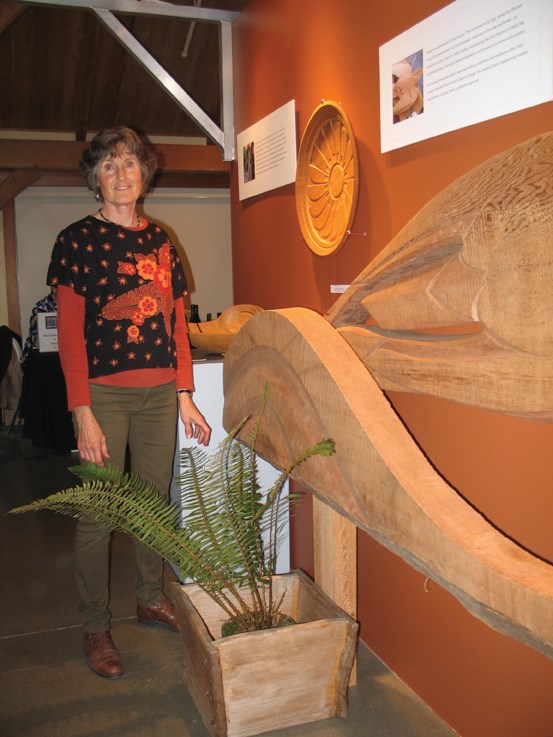With movement towards reconciliation for First Nations comes a tremendous need to tell stories: how it was before other settlers came, how it was after. The shíshálh people told stories of their ancestors and of their own childhoods in performance last Friday. Some were funny; some were sad. Some vilified the white man; others showed a gentler side.
The three-hour show, called Syiyaya, at the Raven’s Cry Theatre was produced for the Sechelt Arts Festival, and it joined the story-telling with some nifty video and music while a cast of actors performed a re-enactment of Sechelt area history. Those who remembered or had been told by their parents about residential school abuses retold these stories on camera and stage.
Though shíshálh people were central in the stories, characters from history were also remembered, such as the Konishi family (who were stripped of their home during Japanese internment war years), Helen Dawe (whose artifact and document collections started the town’s archives) and the Clayton family (whose grocery store stands today). Bert Whitaker, settler and entrepreneur, was exposed as overly fond of the dollar, and the nameless government bureaucrat who tried to justify the rations that were starving the shíshálh to death was dismissed in anger.
The cast and crew for this production was extensive, and they peopled the scenery with loggers, merchants, teachers and elders. Costumes were especially colourful and authentic; the music for both video soundtrack and live piano was excellent. It seems a shame to have this entire production on stage for one night only to a full house crowd. Fortunately, it will be broadcast on Coast TV.
***
The annual art exhibition that accompanies the Sechelt Arts Festival always has at least one wow item on display. This year is no exception. The show opened last Thursday at the Seaside Centre with work from Coast artists and their ancestors and families. Carver Anna Hanson provided one of the wow exhibits in her dynamic piece titled Offshore. She writes that she used her grandfather’s axe and chisels and her grandfather’s way of expressing his art in wood. Her grandfather, Dudley Carter, sculpted strong, flowing planes and curvilinear forms. He passed away at age 101 in 1998 and carved right up to the end of his life. A photo on display of a massive piece, Goddess of the Woods, that he had carved for a 1940 exposition depicts a human dwarfed by the mighty sculpture.
Jen Drysdale of Gibsons found a photo of her maternal grandfather wearing a plaid shirt. It became a theme in her paintings: husky men in the forest wearing plaid. Her mother was an illustrator and her father an artist, giving Drysdale and sister Kathryn a head start in drawing figurative work at an early age.
Greta Guzek’s vibrant painting of a tree, perhaps the family tree, is exceptional. She also shows work by her adult children, daughter Kirsten and son Gustav.
Artist Ed Hill learned his technique from a First Nations artist, and he paints scenes of B.C., always with a good story attached. He mentored and supported his daughter, Melanie Willing, as she learned to draw and paint.
Jessica Silvey was born in Sechelt of Portuguese and First Nations descent. She admired her great-grandmother’s and grand-aunts’ precise work on their hand woven baskets and taught herself to weave. Her daughter Ali Casey paints, and daughter Bella Casey writes.
Also on show is the exquisite work of Hiroshi Shimazaki and representation of the totems from carver Deon Louie. The show is open from Oct. 13 to Oct. 22 at the Seaside Centre with free admission. More information can be found at secheltartsfestival.com



